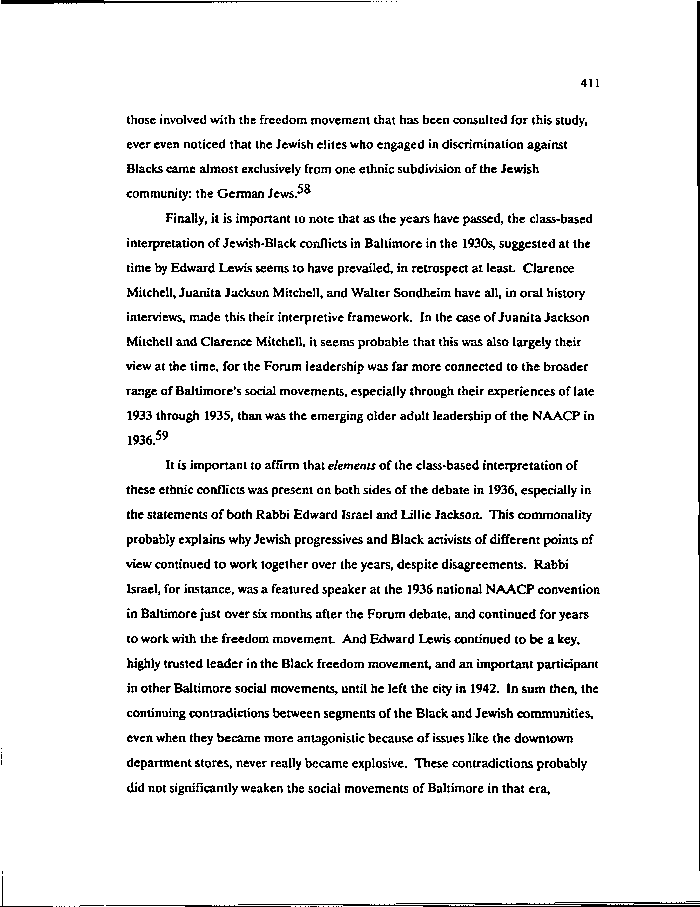|
411
those involved with the freedom movement that has been consulted for this study,
ever even noticed that the Jewish elites who engaged in discrimination against
Blacks came almost exclusively from one ethnic subdivision of the Jewish
community: the German Jews. °
Finally, it is important to note that as the years have passed, the class-based
interpretation of Jewish-Black conflicts in Baltimore in the 1930s, suggested at the
time by Edward Lewis seems to have prevailed, in retrospect at least. Clarence
Mitchell, Juanita Jackson Mitchell, and Walter Sondheim have all, in oral history
interviews, made this their interpretive framework. In the case of Juanita Jackson
Mitchell and Clarence Mitchell, it seems probable that this was also largely their
view at the time, for the Forum leadership was far more connected to the broader
range of Baltimore's social movements, especially through their experiences of late
1933 through 1935, than was the emerging older adult leadership of the NAACP in
1936.59
It is important to affirm that elements of the class-based interpretation of
these ethnic conflicts was present on both sides of the debate in 1936, especially in
the statements of both Rabbi Edward Israel and Lillie Jackson. This commonality
probably explains why Jewish progressives and Black activists of different points of
view continued to work together over the years, despite disagreements. Rabbi
Israel, for instance, was a featured speaker at the 1936 national NAACP convention
in Baltimore just over six months after the Forum debate, and continued for years
to work with the freedom movement. And Edward Lewis continued to be a key,
highly trusted leader in the Black freedom movement, and an important participant
in other Baltimore social movements, until he left the city in 1942. In sum then, the
continuing contradictions between segments of the Black and Jewish communities,
even when they became more antagonistic because of issues like the downtown
department stores, never really became explosive. These contradictions probably
did not significantly weaken the social movements of Baltimore in that era,
|

